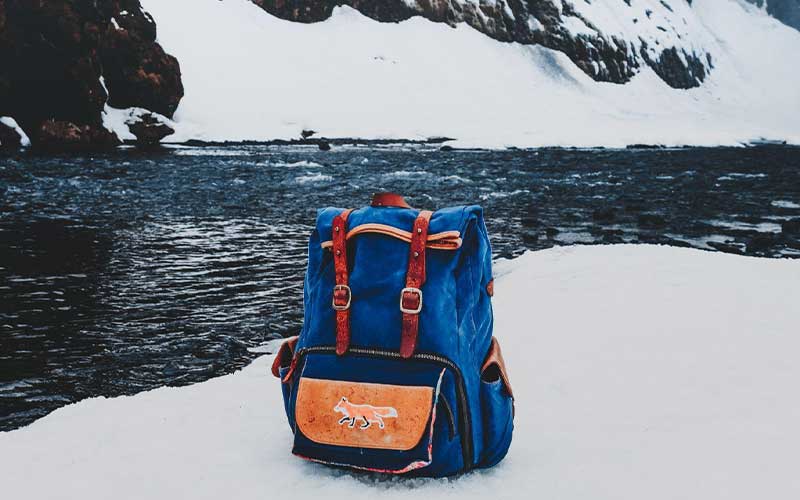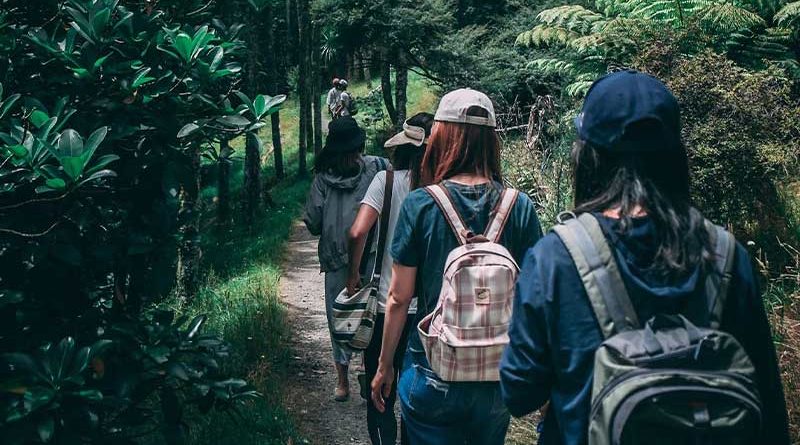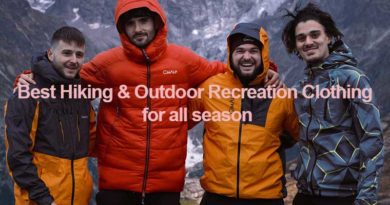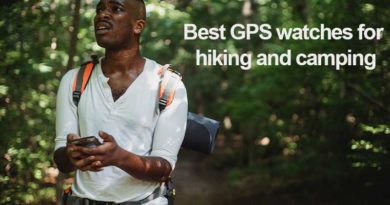Best Essential Things to Carry While on a Trekking Trip
Trekking trips are fun adventures that you should try. It’s an opportunity to experience nature’s colorful landscape, spanning thick green woods and interminable white snow fields. Moreover, the benefits of trekking goes beyond feeding your eye with marvels of nature to improve bodily vitality.
Trekking helps you build stronger bones, better mental health, and healthier heart conditions. On a broader scale, if everyone took to trekking and other physical activities, JAMA International Medicine says, we’ll prevent over 100,000 US deaths yearly.
Now you are planning to book a trekking trip, you should be conscious about what you take along. Why? You may end up carrying more than you need or leaving out crucial items. A mistake here can blight your experience. So, we compiled this list of must-haves to guide your preparation for your next trip. Stay with us to uncover this list and several other useful tips you’ll need.
Tips to Consider When Planning for Things to Carry While Trekking on a Trip
People go on trekking travels for various reasons. It may be a brief visit to a family, an exploration of a new location, or a planned trekking adventure with friends. Whatever your reason may be, it’s essential to consider these tips to have a memorable journey:
1. Choose your luggage size
You should select a backpack before you organize content to place in it. Consider a bag that would be convenient to carry after you fill it.
2. Don’t buy new items.
Avoid purchasing new items unless they are necessary or you’re embarking on your first trekking trip without having the relevant items. Select items you’re comfortable or familiar with, including shoes, clothes, headgear, and other accessories. These should be things that you have been using for a while.
3. Take only essentials.
If you pick supplies randomly, you might squeeze your whole apartment into one bag. Carry necessary materials for a light trip aiding mobility.
4. Pack properly
Carefully organize content in your bag. Wrap delicate materials in large clothes or keep them in thick socks. Place spillable substances like gels, lotions, cream, and shampoo in foil wrappers. If they spill, it does not affect the other items in your bag.
5. Be a minimalist
Keep your luggage light, leaving cosmetics and other similar items behind. If you are away for a long time, you can rebuy these items.
6. Get Gadgets
People often encounter some difficulties like extreme weather conditions when trekking. However, some readymade solutions are available for sale in stores around you. Cotton bags, purse organizers, and sweater scarfs are some personal belongings for a seamless journey.
Best Things to Carry While Trekking on a Trip

Similar to road trips and air travel, there are essential items you should have for an enjoyable trekking trip. Some of these items include;
1. Food and Water
When trekking, your body loses water and frequently taking a sip refreshes you. A WebMD publication recommends taking about five ounces of water every quarter-hour to stay hydrated while walking. You may also avoid consuming sugary substances that fast-track your body to dehydration.
It’s essential to ration your water intake as finding a water source could be difficult. Add some light snacks or fruits for a quick bite. That could include dry fruits, nuts, and dark chocolates.
2. Backpack
Backpacks are shoulder-mobile stores, and they should be compact for easy carriage. You should consider two-strap shoulder bags as their weight balances on your body evenly. Regular backpacks have several pockets where you can keep things.
They are convenient for trips like this and ensure you get one that can contain all your travel items. Remember to keep things light to prevent exhaustion.
3. Trekking Shoes
Particular shoes are explicitly made for trekking long distances. These shoes have rough soles that can withstand rough terrains. Whether you walk through hills or stroll in a valley, the shoe should be easy-on-feet. If you are walking on smooth terrain, you can pack hiking shoes. But if your path is rocky, boots will be the best option for footwear.
When picking your trekking shoes, ensure that they are rugged to avoid worn soles along the way. Waterproof shoes are a plus. You might have to walk through swampy areas, and you want to prevent soaked shoes while on your journey.
4. Maps and Navigation Tools
Maps can help you navigate unfamiliar terrains and keep you on track if you miss the right path. You can also use a phone’s GPS if you get network coverage on the road.
A compass is a mechanical navigation aid and a fine complement to a map. You can also get a route description book written by people who have explored the route you’re treading on.
Here’s a article that shows exactly how to choose the Best GPS watches for hiking and camping
5. Medical Supplies
You may be right on track to your destination, and suddenly, things go south. You need to be ready for any emergencies, and carrying a medical kit is a vital step in doing that. Florida Medical Clinic recommends that your first aid kit contain bandages, antiseptic lotions, medical tapes, disposable medical gloves, and other emergency supplies.
Besides medical supplies, take hand sanitizers to combat dirt and germs. Take a whistle to send a high-pitched call to trekking partners or anyone, as a poor network may abound.
6. Accessories
Pack some accessories like raincoats in case it rains and headgears to protect you from falls. You’ll need a torchlight at night. It is better to carry dry-cell-powered torchlights so you can always change the batteries when they become dim.
Have a Swiss knife to cut fruits and food and detangle yourself if a stem catches you. Powerbanks are helpful, too, if you need to charge your devices.
You’ll need insect repellants, toilet paper, sanitary and unitary products, and wipes. Keep your IDs on. You might need them to get out of a situation; who knows?
How To Dress For A Hiking Trip
Feeling comfortable is crucial if you want to get the best experience from your hiking trip. The clothes you pack for this trip are your immediate source of comfort. Hence, discretion is necessary when selecting what to add to your luggage. Before you begin filling your bags with clothes and shoes, the following tips will help you pick suitable clothes for your hiking trip.
1. Consider The Weather
One of the most important things to consider when packing for a hiking trip is the seasonal condition of the route you plan to take to your destination. Hiking boots, long-sleeved shirts, and waterproof jackets will help you survive the effect of rain or snowfall during spring or fall.
In summer, you can wear hiking sandals. Your clothes should also be made of breathable materials and light colors to attract less heat and allow you to feel comfortable. You’ll need to wear thick clothes and accessories like gloves and beanies to keep your body warm in winter.
2. Dress for Safety
While considering your travel path, you need to think about possible harms that could come your way and how to avert them. For example, if you are going through a location facing an outbreak of a disease, you need to wear long-sleeved shirts and long pants, even in summer. If you are traveling in spring or fall, ensure that your jacket is waterproof and windproof because rain and wind tend to move in the same company.
3. Do Not Compromise Comfort
When going for a trekking trip, you must prioritize comfort over aesthetics. You may want to skip cotton materials since they absorb moisture and will likely cause more irritation when you sweat. However, merino wool or polyester will help you expel the sweat from your body and make you feel comfortable.
4. Consider Other Layers of Cloth
As you pack your shirt and shorts (or trousers), you also need to consider other layers of clothing like your bra, singlet, pants, and other underwear. These articles of clothing are directly in contact with your body, and they determine, to a large extent, how comfortable you feel. Getting breathable materials gives you better comfort, and they also dry faster when you wash them.
5. Carry Extra Clothes
It is advisable to carry more clothes than you need when preparing for a hiking trip. As much as you try to prepare, it is impossible to predict the weather. It will help if you have extra clothes if the weather changes when you are out. The extra clothes can also come in handy if there’s a situation and someone needs to be covered.
If you want detailed information about what to wear trekking, check out our guide about Best Hiking & Outdoor Recreation Clothing for all season
Ready for Your Next Trekking Trip?
Trekking trips are adventurous, and they offer many health and psychological benefits. However, how well you pack can make or break the excellent experience you wish for. Extra tips, check the weather forecast in the areas where you’ll be reversing to know the clothes to pack.
Light clothes in cold weather or thick clothes in the hot sun will have you hissing and kicking when you should be smiling and laughing. When it comes to trekking travels, it’s not about how far you are going but how well you can cope on the road to your destination.
FAQs
Is trekking the same as hiking?
No, trekking involves walking long distances to reach a destination for several days. Hiking involves long walks, but it only lasts a short period – a day at most.
Should I wear jeans for my trekking trip?
No. There are specific clothes designed for trekking trips. These clothes are lighter, more comfortable, and retain moisture.
Can I wear sports shoes to trek?
Yes. You can wear sports shoes to go on trekking expeditions. They are rugged, lightweight, and provide comfort.



